黄檗僧の袈裟や法衣は、他の宗派のものとは異なり、当時の人の目にはとてもカッコ良く見えていたようです。そのため、臨済宗だけでなく曹洞宗という他宗派の僧や歌舞伎衣装までもが、黄檗僧の衣を真似ました。
黄檗僧の影響の大きさに驚いた幕府は、寛文13年(1673)に、黄檗僧の江戸市中徘徊の禁令を出したほどでした。
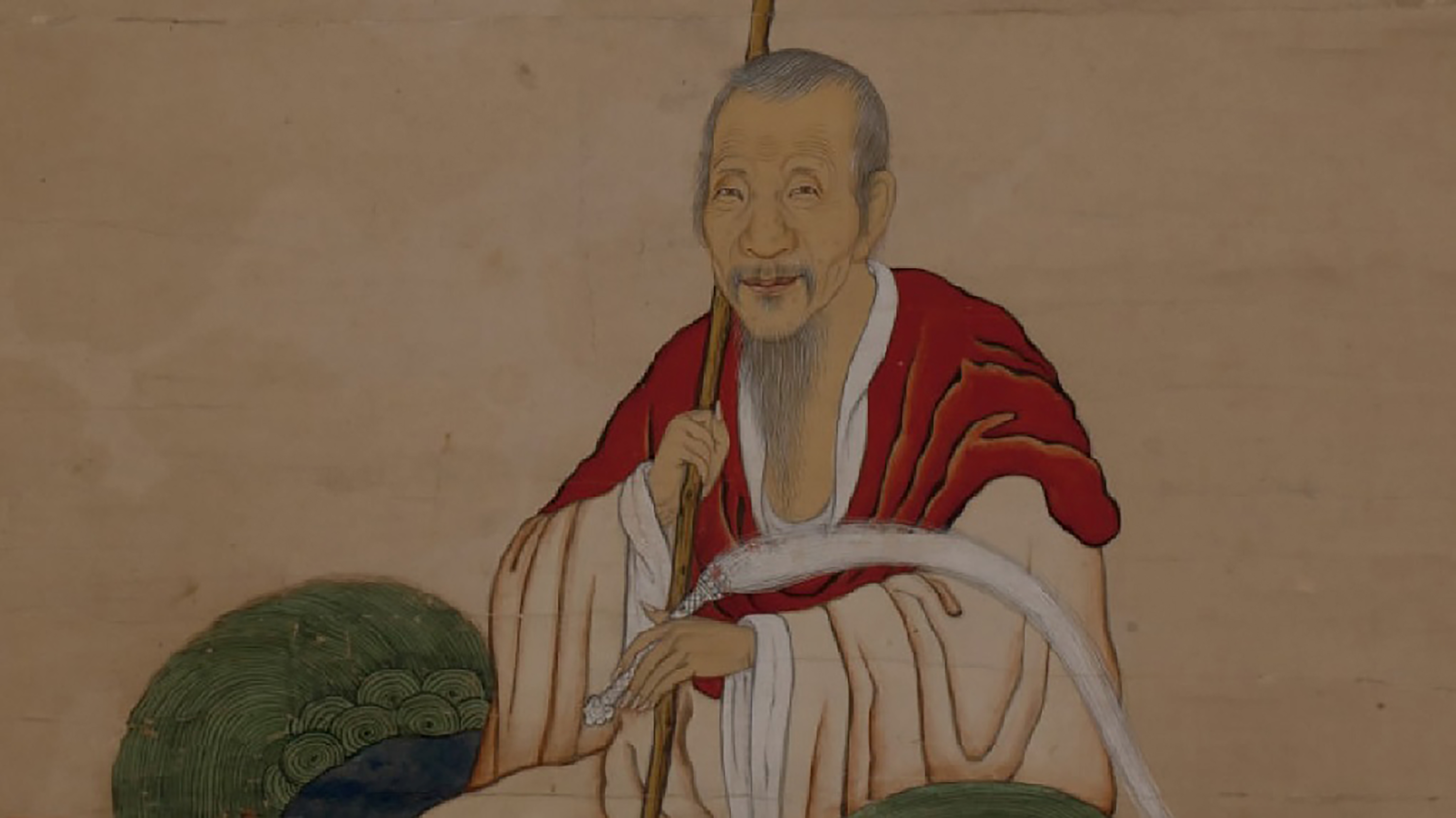
隠元禅師と黄檗文化
Zen Master Ingen and Obaku Culture
黄檗文化は江戸時代の華
黄檗文化とは
黄檗文化とは、黄檗宗の宗祖隠元の渡来以降、中国からもたらされた明末清初の諸文化のこと。
江戸時代の日本へ与えた影響は幅広く、建築、文学、音楽、書道、絵画、彫刻、印刷、医学といった学術や文化
の面だけでなく、衣食住といった生活に密接した分野にまで及び、江戸期の日本文化を大きく発達させました。
それらは現代の私たちの身のまわりに溶け込み、今なお日本文化の中に息づいています。
食文化
隠元の名を冠したインゲン豆は、今では和食の食材として欠かせない存在です。このインゲン豆やスイカ、レンコン、もやしなどは、隠元によってもたらされたと言われています。
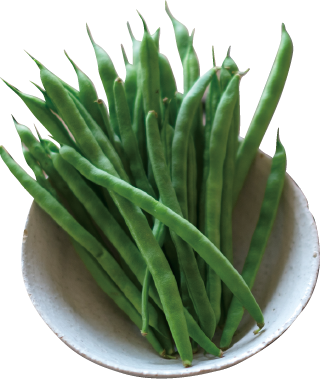
インゲン豆
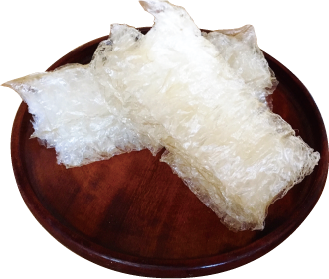
寒天
食卓
江戸期の日本では、食事をする時、一人用の膳を用いていました。ところが、中国から黄檗の普茶料理とともに食卓(テーブル)がもたらされ、皆で一緒に食卓を囲んで食事をとる新しい食事形式が始まりました。
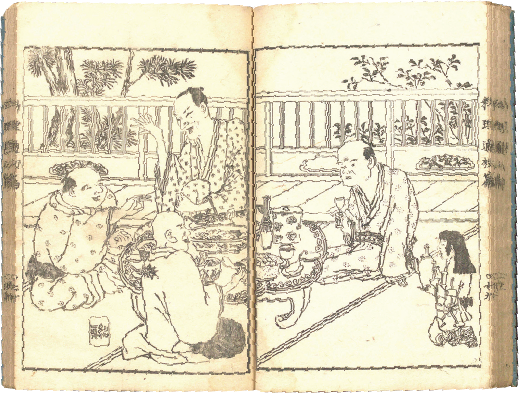
食卓を囲む大田南畒ら。『料理通』より抜粋
(人間文化研究機構国文学研究資料館蔵 CC BY-SA)
煎茶
茶は、臨済宗の開祖栄西が1191年に中国から長崎の平戸にもたらし、日本に広がりました。しかしそれらは、磚茶や挽茶と呼ばれる茶葉を粉末にし、湯に溶かして飲む方法で、主に権力者や有力者など限られた人々のものでした。
一方、茶葉を湯に浸してそのエキスを飲む煎茶は、隠元らによってもたらされました。禅僧の間だけでなく町中の茶屋などを通して庶民の間にも普及し、煎茶道や菓子の発達も促しました。また、売茶翁として知られる江戸中期の黄檗僧月海は、京都の各所で茶を供し、多くの文人とも交流することで、煎茶の定着に大きな役割を果たしました。
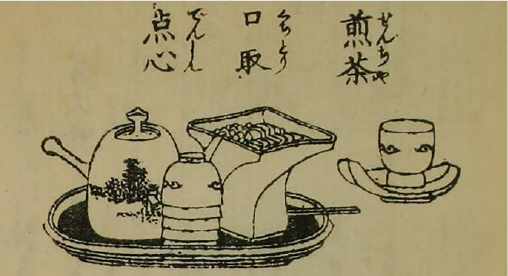
『料理通』より抜粋
(人間文化研究機構国文学研究資料館蔵 CC BY-SA)
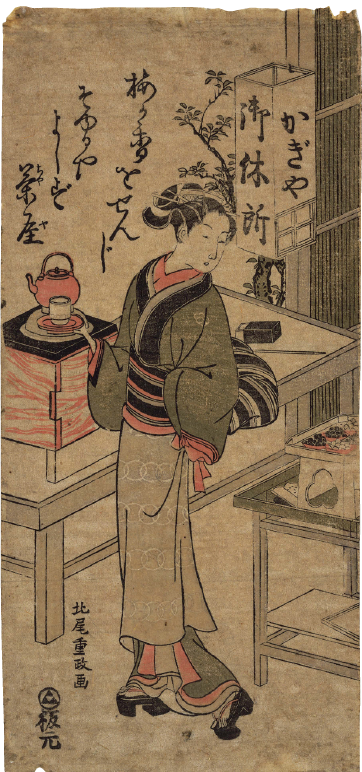
「かぎやおせん」(北尾重政筆、東京国立博物館蔵Image TNM Image Archives)
「お仙」は水茶屋「鍵屋」の看板娘としてもてはやされ、その人気は狂言や歌舞伎がつくられるほど。
普茶料理
普茶料理とは、中国の料理形式の一つで、隠元をはじめとする黄檗僧らによって伝えられました。肉や魚など動物性のたんぱく質を使用しない中国風の精進料理です。油を多用するのが特徴で、その調理法は極めて洗練されています。
黄檗僧が長崎から畿内そして江戸などへ進出するのにあわせて、普茶料理も各地に伝播していきました。やがて普茶料理は、黄檗の寺院料理としてだけでなく市中の料理屋でも提供され人気を呼びました。
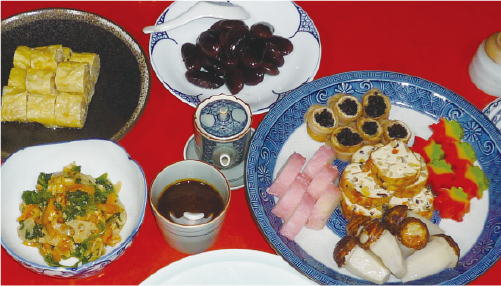
普茶料理(聖福寺)
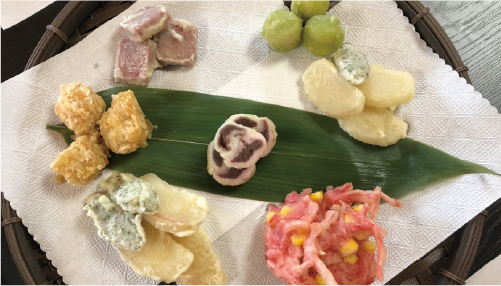
普茶料理(萬福寺)
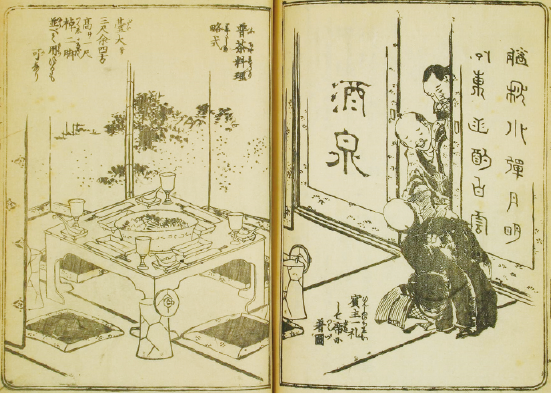
江戸時代の普茶料理の様子。『料理通』より抜粋
(人間文化研究機構国文学研究資料館蔵 CC BY-SA)
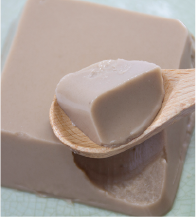
胡麻豆腐
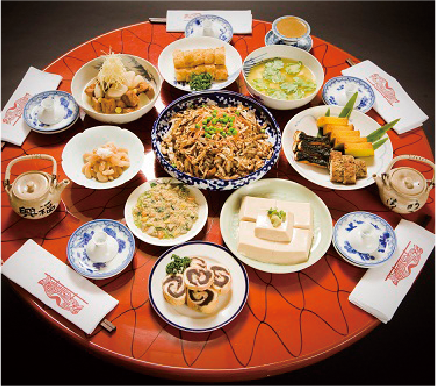
普茶料理(興福寺)
卓袱 料理
卓袱料理は、テーブルを囲んで食する新しい料理形式で、日本・西洋・中国の献立が混在したものです。18世紀には卓袱料理について記された本が多数発行され、19世紀初頃には地方の村人にも知られるほど広く普及していました。
江戸の高級料理屋八百膳の主人栗山善四郎は、『江戸流行料理通』の「第4編 卓袱料理・普茶料理」を執筆するため、卓袱料理を学びに長崎まで出かけたほどでした。江戸や京・大坂といった都市部には卓袱料理屋が開店していましたが、やはり卓袱料理の本場長崎は別格の存在だったようです。
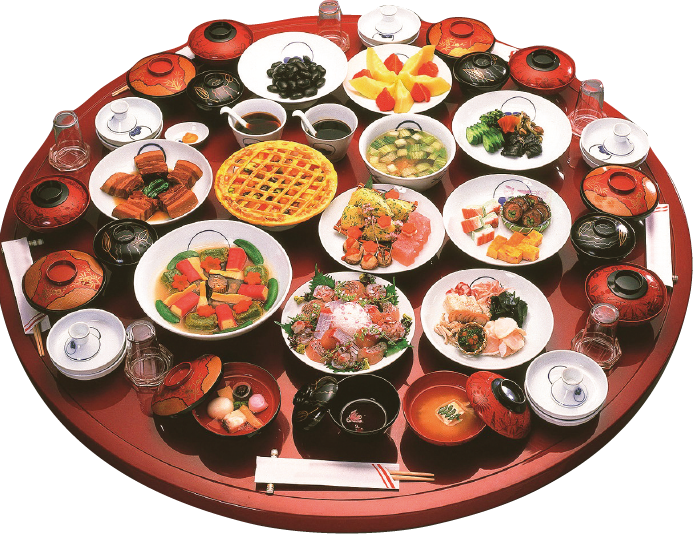
卓袱料理
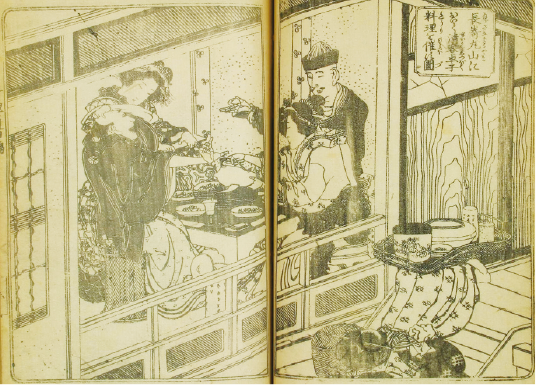
「長崎丸山において清客卓子料理を催す図」『料理通』より抜粋
(人間文化研究機構国文学研究資料館蔵 CC BY-SA)
ファッション
僧服
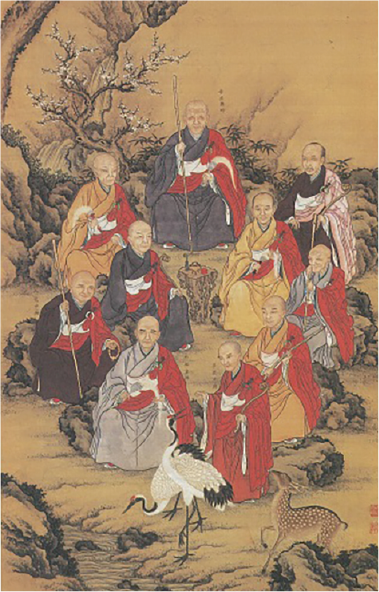
「祖師源流図(部分)」山本若麟 興福寺蔵
歌舞伎衣装
江戸時代、流行の最先端を行く歌舞伎の世界では、衣装に新しいものを取り入れ、それを見た人々が真似をして新たな流行が広がっていきました。歌舞伎衣装の一つに、
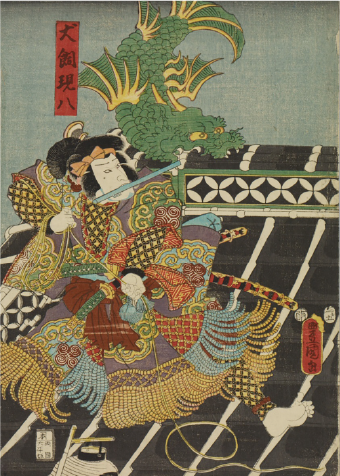
四天を身につけた歌舞伎役者/三代目豊国「犬養現八(三代目関三十郎)」早稲田大学演劇博物館所蔵
隠元頭巾
江戸時代、お
※高祖:一宗一派を開いた僧
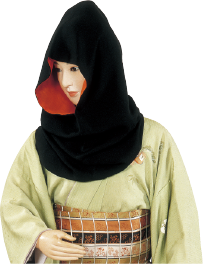
隠元頭巾とよばれるお高祖頭巾(袖頭巾)
(画像提供:風俗博物館)
宗教
黄檗式の
※梵唄:梵語や唐韻による経文などに節を付けて唱えること
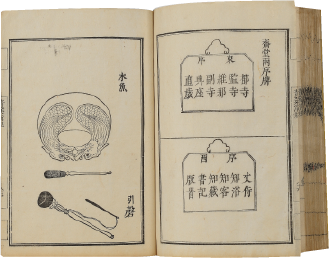
木魚と引磬『黄檗清規』京都 萬福寺蔵
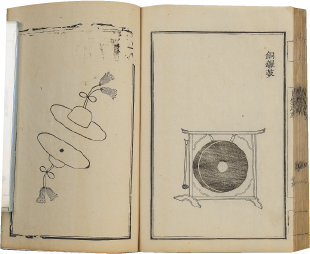
銅鑼鼓と大鐃鉢鈸『黄檗清規』 京都 萬福寺蔵
建築
長崎の唐寺や宇治の萬福寺は、
※伽藍:寺院にあるお堂や塔、門などの建築物の集まり
※堂宇:お堂あるいはお堂の
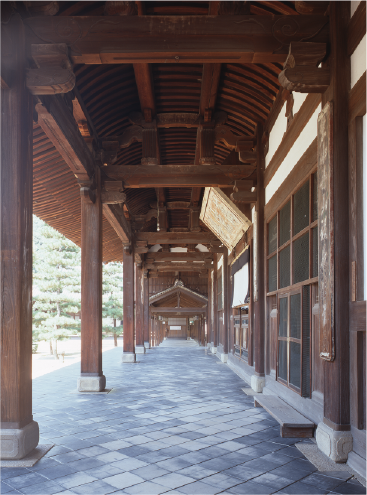
黄檗天井
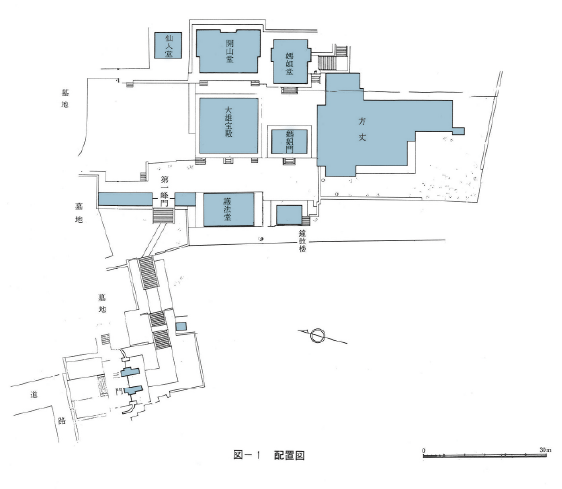
「崇福寺建造物配置図」『長崎県建造物復元記録図報告書』より
門と本堂の中心軸がずらされている
芸術
絵画
黄檗宗の渡来にともない、長崎や京都を中心に新しい絵画様式が誕生しました。「黄檗画派」には余技的な水墨画と、
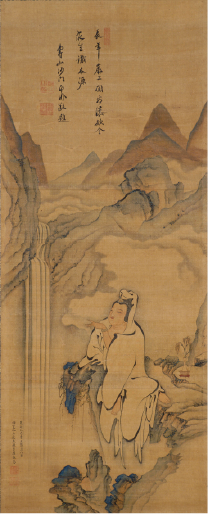
「白衣大士観瀑図」逸然性融 長崎歴史文化博物館蔵
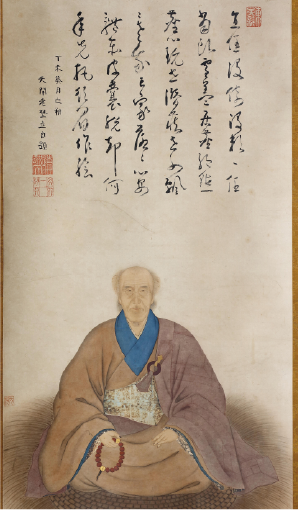
「獨立禅師画像」喜多元規筆・
彫刻
沈滞していた江戸時代の彫刻に新風を吹き込んだのは、黄檗寺院の仏像制作に腕を振るった中国人仏師たちでした。中でも
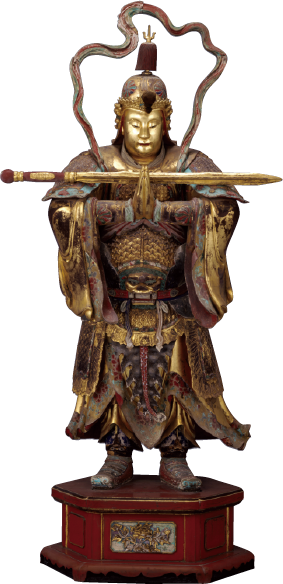
「韋駄天立像」范道生 東明山興福寺蔵
書
隠元をはじめとする黄檗宗の僧侶たちは、多くの個性的な書を残しました。中国からもたらされたこの力強く筆勢にあふれた新しい書法は、唐様の書と呼ばれ、儒者や僧侶、文人だけでなく庶民にまで広く流行します。隠元・木庵※・即非※は「黄檗の三筆」と称され、特に人気がありました。
今でも唐寺を訪れると、禅僧による大らかで力強い書をもとに作られた扁額や
※ 木庵:師匠である隠元に招かれ1655年に渡来した黄檗僧。福済寺の住持となり、後に隠元の後を継いで宇治萬福寺第2代住持となる。
※ 即非:師匠である隠元に招かれ1657年に渡来した黄檗僧。崇福寺の住持となり、中興開山の祖とされる。後に小倉城主小笠原忠真の要請により福聚寺を開山。
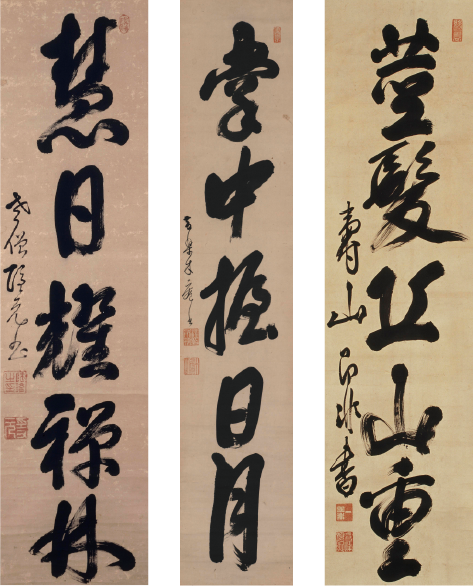
左から隠元「慧日輝禅林」 木庵「掌中握日月」 即非「一行書」
いずれも長崎歴史文化博物館蔵
篆刻
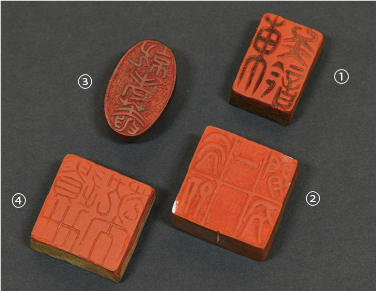
伝独立所用印 岩国徴古館所蔵
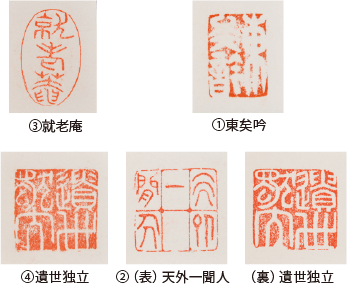
伝独立所用印 印影 岩国徴古館所蔵
文学
江戸時代には、隠元の渡来をきっかけとして詩偈が注目され、『本朝高僧詩選』や『和漢高僧詩偈抄』が刊行されるなど、僧詩ブームが巻き起こるほどでした。禅宗では、悟りの境地は言葉によって説明することはできず、師と弟子の間で心から心へ伝えられると考えられていますが、その一方で、隠元をはじめとする黄檗僧たちは多くの詩や偈を残し、それらは言葉を用いて伝える重要性を示しました。特に、隠元の豊かな感性が反映された詩偈には、審美性や高い文芸性が見られ、江戸時代の文学史において特筆すべき事柄であると考えられています。
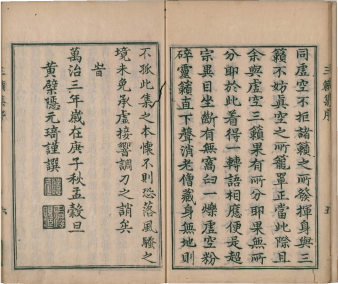
隠元が編纂した詩集『
国立国会図書館デジタルコレクション
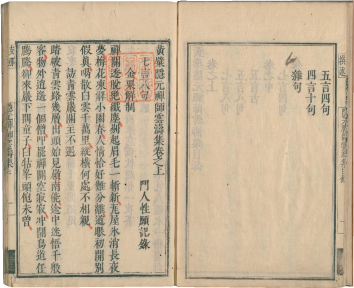
隠元の詩偈集『黄檗隠元禅師雲涛集』
隠元隆琦著・虚白性願編
国立国会図書館デジタルコレクション
文化
原稿用紙
現在使用されている原稿用紙は、1枚が20字×20行の400字詰めで、紙の中央に題名などを書き込む枠がある規格になっています。これは、鉄眼一切経(黄檗版大蔵経)をはじめ、『隠元禅師語録』『黄檗和尚太和集』など、黄檗版と称される黄檗宗独自の版木彫刻の様式がお手本となったものです。
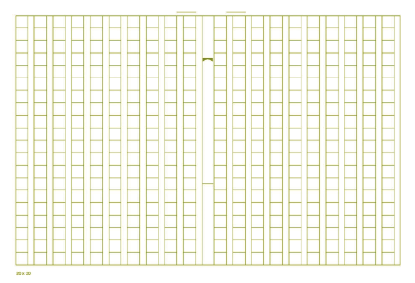
原稿用紙
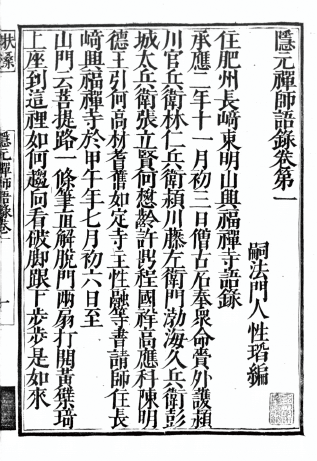
見開きで20字20行となり、中央に枠がある形式
『隠元禅師語録』 国立公文書館蔵
明朝体
明朝体は、新聞や書籍、雑誌など私たちの身の回りで最も普通に用いられている書体です。縦の画は太く、横の画が細いのが特徴です。もともと中国宋時代に使い始められましたが、日本へは明時代の書物として多く伝わったことから明朝体と呼ばれます。隠元の語録や年譜なども全て明朝体で印刷されました。
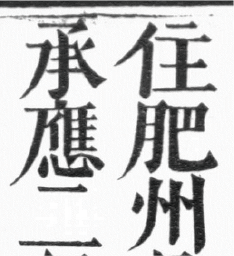
明朝体の文字『隠元禅師語録(部分拡大)』 国立公文書館蔵
印刷
日本国内に仏教経典の集大成である一切経の版木が無いことを残念に思い、版木の製作を志していた鉄眼は、寛文9年(1669)、隠元より明朝版大蔵経を贈られ、版木の作成を開始しました。初版は延宝6年(1678)に完成し、鉄眼一切経または黄檗版大蔵経と呼ばれています。6万枚にものぼる版木を保管し印刷する場所として建立された萬福寺塔頭・宝蔵院では、今なお大蔵経の木版印刷が行なわれ全国の仏教寺院に提供されています。
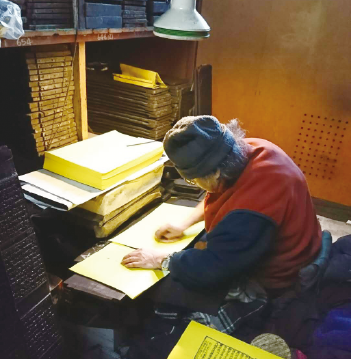
宝蔵院での木版印刷の様子。
鉄眼一切経の版木は重要文化財。
新しいものに「隠元」や「黄檗」とつける
「インゲン豆」や「隠元頭巾」、「隠元帽子」、「隠元やかん」、「隠元ふとん」、「隠元豆腐」、あるいは「黄檗料理」、「黄檗いり出」、「黄檗もち」など、目新しいものに、「隠元」を付けて「隠元○○」や、「黄檗」を付けて「黄檗○○」と呼ぶ事が流行りました。
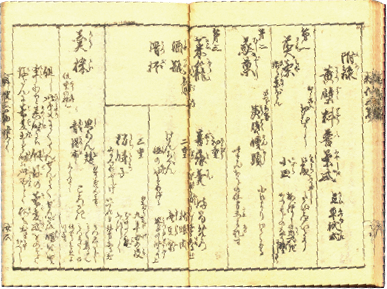
黄檗料普茶式の項に「黄檗饅頭」の字が見える。
『料理早指南』より抜粋
(人間文化研究機構国文学研究資料館蔵 CC BY-SA)
Obaku culture flowered colorfully in Edo-period Japan.
What is Obaku culture?
Obaku culture comprised various elements of late-Ming to early-Qing Chinese culture introduced to Japan after the arrival of Ingen, the founder of the Obaku school of Buddhism.
It contributed immensely to the development of Japanese culture in the Edo period, making massive impacts on a broad range of fields, from academic and cultural fields—architecture, literature, music, calligraphy, painting, sculpture, printing, medicine, etc.—to the lifestyles of ordinary people, including food, clothing, and housing.
These elements of Obaku culture have since been deeply rooted in the culture and lives of people in Japan.
Gastronomy
The common bean, which in Japan is called the “Ingen bean” after the Zen master, is now an indispensable ingredient of Japanese dishes. It is said that Ingen introduced to Japan not only common beans but also various other agricultural products, such as watermelons, lotus roots, and bean sprouts.

Common beans (“Ingen beans” in Japan)

Agar
Dining table
In Edo-period Japan, meals were served to each person on a footed tray. However, after dining tables were introduced from China along with Chinese-style Obaku-school vegetarian cuisine called “Fucha cuisine,” a new style of having meals at a table together spread among people in Japan.

Ota Nanpo having a meal with others at a table, from Ryoritsu, an Edo-period cookbook
(licensed under CC BY-SA; from the collection of the National Institute of Japanese Literature, a National Institute for the Humanities)
Habit of having sencha (extract from tea leaves infused in hot water)
The habit of drinking tea was introduced from China to Hirado, Nagasaki, by Eisai, the founder of the Rinzai school of Buddhism, in 1191, and spread throughout Japan. However, the word “tea” here meant a mixture of powder of dried steamed tea leaf blocks (dancha) or powdered tea leaves (hikicha) in hot water, and the habit of enjoying this kind of tea was exclusive to a limited number of people, mainly those with political power or of significant influence.
To Japan in such a situation, Ingen and others introduced the habit of having sencha, a new kind of tea made by infusing dried tea leaves in hot water. This new style of having tea spread not only among Zen priests but also to teahouses on the streets and ordinary people, thereby facilitating the development of a new kind of tea ceremony called “sencha-do” and Japanese confectionery. Afterward, Gekkai, an Obaku-school priest in the mid-Edo period nicknamed “Baisao” (lit. the “Venerable Tea Vendor”), served sencha tea at various places in Kyoto, playing an important role in getting sencha deeply rooted in Japan.

From Ryoritsu
(licensed under CC BY-SA; from the collection of the National Institute of Japanese Literature, a National Institute for the Humanities)

Osen of the Kagiya (by Kitao Shigemasa; an image from the Tokyo National Museum (TNM) Image Archives)
Osen, a waitress at the teahouse Kagiya, was so popular that she inspired Kyogen and Kabuki plays.
Fucha cuisine
Fucha cuisine is a style of cuisine introduced from China to Japan by Ingen and other Obaku-school priests. It is Chinese-style vegetarian cuisine using no ingredients containing animal protein, such as animal or fish meat. Fucha dishes, made with extremely sophisticated cooking techniques, are characterized by the use of a large amount of oil. Fucha cuisine is one of the origins of Shippoku cuisine, a blend of various cookery styles unique to Nagasaki.
Fucha cuisine spread over Japan as Obaku-school priests expanded their scope of activities to the region around the imperial capital and then to Edo. In addition to being served at Obaku-school temples, Fucha dishes later began to be served at restaurants on the streets and became popular among ordinary people.

Fucha meal served at Shofukuji Temple

Fucha meal served at Manpukuji Temple

Fucha meal in the Edo period, from Ryoritsu
(licensed under CC BY-SA; from the collection of the National Institute of Japanese Literature, a National Institute for the Humanities)

Sesame tofu

Fucha meal served at Kofukuji Temple
Shippoku cuisine
Shippoku cuisine originated in Nagasaki as a new style of cuisine served to each group of people at a table. A Shippoku meal comprises Japanese, Western, and Chinese dishes served together. With many books about Shippoku cuisine published in 18th-century Japan, this new cookery style spread so widely that even ordinary people in rural villages knew about it around the early 19th century.
Kuriyama Zenshiro, the owner of Yaozen, a luxury restaurant in Edo, even went on a long journey to Nagasaki to learn Shippoku cuisine and wrote Chapter 4 devoted to Shippoku cuisine and Fucha cuisine of the book Edo Ryuko Ryoritsu, which concerns popular dishes in Edo. This fact suggests that, although there were many Shippoku restaurants in urban areas, such as Edo, Kyoto, and Ozaka, Shippoku cuisine served in Nagasaki, its place of origin, was special after all.

Shippoku meal

“Serving a Shippoku meal to a Chinese guest in Maruyama, Nagasaki,” from Ryoritsu
(licensed under CC BY-SA; from the collection of the National Institute of Japanese Literature, a National Institute for the Humanities)
Fashion
Priests’ robes
Obaku-school priests were wearing different kinds of kesa and hoe robes from those worn by priests in other Buddhist schools. To other people in those times, Obaku-school priests’ robes seemed very cool. Therefore, Zen priests in other schools, including the Rinzai and Soto schools, and even Kabuki actors dressed in imitation of Obaku-school priests.
The great surprise of the Tokugawa shogunate at the enormous influence of Obaku-school priests caused the ruler to ban Obaku-school priests from strolling around Edo in 1673.

Part of Soshi Genryu-zu (“Patriarchs of Zen Buddhism”) by Yamamoto Jakurin, from the collection of Kofukuji Temple
Kabuki costumes
In the Edo period, Kabuki actors served as fashion trend setters by incorporating novel elements in their costumes. Their styles of dressing were copied by ordinary people, resulting in the spread of a new fashion trend. A kind of Kabuki costume called “yoten,” a slightly short robe with slits on both sides of its hem and without okumi (a gusset sewn in the front panel), was created as a new costume inspired by robes of Obaku-school priests.

Ukiyo-e by Utagawa Toyokuni III depicting the Kabuki actor Seki Sanjuro III in a yoten robe playing the part of Inukai Genpachi, from the collection of The Tsubouchi Memorial Theatre Museum, Waseda University
Ingen-style headscarves
In the Edo period, a kind of headscarf shaped like a kimono sleeve was in vogue. This kind of headscarf, designed for the wearer to look ahead through its sleeve opening, was broadly called the “okoso zukin” (okoso-style headscarf) but was also referred to as the “Ingen zukin” (“Ingen headscarf”).
※ The word “okoso” means a Buddhist priest who has founded a sect or school. This may mean that people in the Edo period most often associated the word “okoso” with Ingen.

Okoso-style (sleeve-shaped) headscarf also known as an “Ingen headscarf”
(Courtesy of Costume Museum)
Religion
The Obaku school chanted Sanskrit and Chinese sutras in a unique style and used unique kinds of instruments (mokugyo woodblocks, long-handled bowl-shaped bells, copper bowls, small hand drums, large cymbals, and copper gongs) in sutra chanting. These distinctive features attracted the close attention of other people, including many priests in other schools. Some priests in other Buddhist schools even chanted sutras in Chinese or changed their Buddhist names to Obaku-style ones.
※Mokugyo woodblocks, which are used widely today when Buddhist sutras are chanted, are thought to have been introduced to Japan by the Obaku school.

A mokugyo woodblock and a long-handled bowl-shaped bell depicted in Obaku Shingi, from the collection of Manpukuji Temple, Kyoto

A copper gong and a pair of large cymbals depicted in Obaku Shingi, from the collection of Manpukuji Temple, Kyoto
Architecture
Chinese temples in Nagasaki and Manpukuji Temple in Uji, Kyoto, featured the distinctive layout and design of buildings, including halls, pagodas, and gates, modeled after that of temples in Ming China. They were characterized, for example, by hall buildings or their eaves painted in red, peach and bat motifs, arched ceilings called “Obaku ceilings” (corniced ceilings), and the arrangement of a gate and the main hall that were not centered at the same point. This unique style of architecture created a new, exotic landscape in Japan.

Obaku ceiling

Layout of the buildings at Sofukuji Temple from the Illustrated Report of Restored Buildings in Nagasaki Prefecture
A gate and the main hall are not centered at the same point.
Art
Painting
The introduction of Obaku-school Buddhism to Japan triggered the origination of a new school of painting that was active mainly in Nagasaki and Kyoto: the Obaku school of painting. Obaku-school paintings primarily comprised India-ink paintings created as a hobby and realistic Obaku-school portraits in brilliant, strong colors created by professional painters represented by Kita Soun and Kita Genki. The Obaku school of painting enormously influenced various Japanese artists, including Ike no Taiga, who made outstanding achievements in Bunjinga-style painting, the versatile artist and scholar Kimura Kenkado, and the “eccentric” painter Ito Jakuchu.

Byakue Daishi Kanbaku-zu (“Bodhisattva in a White Robe Looking at a Waterfall”) by Itsunen Shoyu, from the collection of Nagasaki Museum of History and Culture

Dokuryu Zenshi Gazo (“Portrait of Zen Master Dokuryu”) by Kita Genki
Dokuryu Zenshi Gazo (“Portrait of Zen Master Dokuryu”) by Kita Genki with a legend written by Dokuryu Shoeki, from the collection of Nagasaki Museum of History and Culture
Sculpture
In the Edo period, Chinese sculptors harnessed their great skills to create Buddha statues for Obaku-school temples, thereby breathing fresh life into the then failing world of Japanese sculpture. A representative one among those sculptors of Buddhist statues was Han Dosei (1635–70), who worked for not only Chinese temples in Nagasaki but also Manpukuji Temple in Uji, Kyoto, at the request of Ingen. Obaku-style Buddha statues with exotic appeal, depicted as wearing decorative Ming-style robes, provided Japanese sculptors with great inspiration, leading them to create similar statues outside Obaku-school temples.

Idaten Ryuzo (“Standing Statue of Idaten [Skanda]”) by Han Dosei, from the collection of Tohmeizan Kofukuji Temple
Calligraphy
Obaku-school priests, including Ingen, created many calligraphic works embodying their individualities. The powerful and vivid Chinese style of calligraphy that they newly introduced to Japan spread not only among Confucian scholars, priests, and the literati but also to a wider range of people, including the general public. Ingen, Mokuan,* and Sokuhi* were especially popular and referred to as the “three greatest Obaku calligraphers.”
Visitors to Chinese temples in Nagasaki can still find unconstrained powerful calligraphic works by Zen priests in horizontal and vertical frames displayed at gates or on eaves.
※ Mokuan was an Obaku-school priest who moved to Japan at the invitation of Ingen, his master, in 1655. He became the chief priest at Fukusaiji Temple in Nagasaki and later succeeded to Ingen to become the second chief priest at Manpukuji Temple in Uji, Kyoto.
※ Sokuhi was another Obaku-school priest who moved to Japan at the invitation of Ingen, his master, in 1657. He became the chief priest at Sofukuji Temple in Nagasaki and is known as a restorer of the temple. He later established Fukujuji Temple in Kokura at the request of Ogasawara Tadasane, the then lord of Kokura Castle.

Calligraphic works by Ingen, Mokuan, and Sokuhi (from left),
all from the collection of Nagasaki Museum of History and Culture
Seal engraving
In Japan, wooden, stone, gold, and other seals were long used under the influence of China. In the Edo period, Dokuryu Shoeki (1596–1672), who became an Obaku-school priest under the guidance of Ingen, introduced elegant Ming-style seal engraving from China to Japan, causing a revolutionary change in Japanese seal engraving. Dokuryu Shoeki and Shin’etsu (1639-95) , another Chinese priest who moved to Japan and introduced Chinese poetry, calligraphy, and seal engraving to the country, are known as the founders of Japanese seal engraving.

Seals thought to have been used by Dokuryu, from the collection of Iwakuni Chokokan

Impressions of seals thought to have been used by Dokuryu, from the collection of Iwakuni Chokokan
Literature
In the Edo period, the arrival of Ingen in Japan aroused public attention to poetry about Buddhist teachings, leading to the massive popularity of various collections of poems by priests. In Zen Buddhism, it is generally thought that enlightenment cannot be explained verbally but can be shared only spiritually between masters and their disciples. Meanwhile, Ingen and other Obaku-school priests composed many poems and verses, showing the importance of verbal communication in Buddhism. Poetry by Ingen in particular reflects his great aesthetic and literary sensitivity, which is viewed as a noteworthy highlight in the history of Edo-period literature.

Sanraishu, a collection of poems compiled by Ingen in 1660
from the National Diet Library Digital Collections

Obaku Ingen-zenshi Untoshu, a collection of poems by Ingen
written by Ingen Ryuki and edited by Kyohaku Seigan,
from the National Diet Library Digital Collections
Culture
Manuscript paper
A sheet of manuscript paper of the kind currently in widespread use has 400 squares—20 vertical lines of 20 squares—with a space at the center in which the title or the like is written. This format is originally modeled after the Obaku school’s unique format of printing blocks, which were used to print various collections of Obaku-school sutras, as well as words of Ingen and other priests.

Manuscript paper

Format of a double spread with 20 vertical lines of 20 characters with a space at the center
Ingen-zenshi Goroku (“Collected Words of the Zen Master Ingen”) from the collection of the National Archives of Japan
Ming typefaces
Ming is the kind of typeface most widely used in Japanese publications, including newspapers, books, and magazines. These typefaces are characterized by thick vertical strokes and thin horizontal strokes. They originated in Song China but were introduced to Japan as typefaces used in Ming-period books. Therefore, they are called “Ming” typefaces. Collected words of Ingen and chronologies of his life were all printed in Ming typefaces.

Enlarged image of characters in a Ming typeface in Ingen-zenshi Goroku (“Collected Words of the Zen Master Ingen”) from the collection of the National Archives of Japan
Printing
Tetsugen, an Obaku-school priest, wished there would be printing blocks to be used to print the Issaikyo (Chinese Buddhist canon) in Japan, so he aspired to create printing blocks. In 1669, he was presented by Ingen with a Ming version of the Chinese Buddhist canon, which motivated him to finally launch his long-planned project. In 1678, Tetsugen completed the printing blocks and the first printing of the canon, which is referred to as Tetsugen Issaikyo or the Obaku version of the Chinese Buddhist canon. At Manpukuji Temple, a building named “Hozoin” was constructed as a storage and printing house of those 60,000 printing blocks. In this building, the Chinese Buddhist canon is still being printed with wood blocks and provided to Buddhist temples around Japan

A sutra is being printed with wood blocks in Hozoin.
The printing blocks for Tetsugen Issaikyo are designated an Important Cultural Property.
Practice of beginning the names of novel things with “Ingen” or “Obaku”
The practice of beginning the names of novel kinds of things with “Ingen” or “Obaku” was adopted widely, resulting in such names as “Ingen bean,” “Ingen headscarf,” “Ingen bonnet,” “Ingen kettle,” “Ingen futon,” “Ingen tofu,” “Obaku cuisine,” “Obaku stew,” and “Obaku rice cake.”

“Obaku bun” mentioned in a chapter about Obaku-style Fucha cuisine,
from Ryori Hayashinan, a quick guide to cooking
(licensed under CC BY-SA; from the collection of the National Institute of Japanese Literature, a National Institute for the Humanities)







